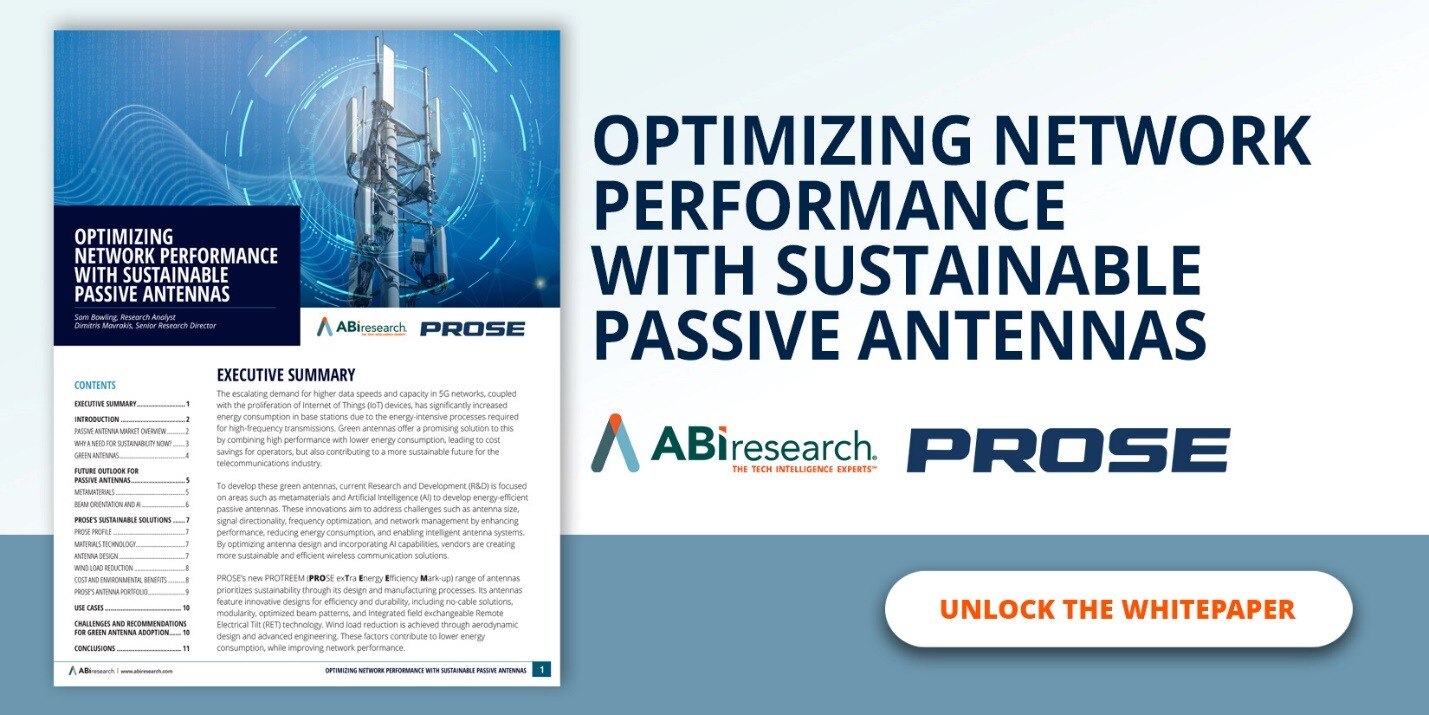Antenna optimization plays a vital role in an ever-connected world. With 5G adoption and data generation skyrocketing, optimizing network performance is top-of-mind for enterprises and industries. Although 5G offers unprecedented bandwidth capacities and unlocks new use cases, it also requires 3X more energy to match the same coverage as a 4G/Long Term Evolution (LTE) network. Therefore, the telecommunications industry craves innovative ways to squeeze more network performance from less hardware.
Sustainability also weighs heavily on the minds of telcos, with numerous operators committed to emissions reduction targets. Furthermore, 80% of connections have their climate impact disclosed, bringing network efficiency into the limelight.
Optimizing an antenna involves improving efficiency, reliability, and speed, all while minimizing the toll on network resources. Two front-running techniques to achieve antenna optimization include Artificial Intelligence (AI) integration and the use of metamaterials.
AI’s Growing Role in Optimizing Antennas
In the future, AI will be essential to maximizing antenna performance efficiency. It can transform how cellular networks are optimized by automating manual processes and making real-time adjustments based on data analytics. While AI integration is still nascent and only integrated by a handful of vendors/operators, if any, today, these tools will allow telco operators to manage complex tasks and respond swiftly to changing conditions. This ensures optimal performance even as network traffic fluctuates.
Key features of future AI-driven antennas include:
- Real-Time Data Collection and Monitoring: AI continuously collects data from antenna systems, such as their position, azimuth, and height, as well as traffic patterns. Key Performance Indicators (KPIs) pulled from AI-driven insight allow operators to quicky detect inefficiencies and anomalies. This supports more informed decision-making regarding network resource allocation, enhances network performance, and optimizes energy consumption.
- Enhanced Beam Orientation: AI tools support remote horizontal and vertical beam adjustments. This provides dynamic beam steering to adapt to external challenges, such as changes in the physical environment or user traffic fluctuations. This capability enables networks to maintain consistent, high-quality performance in dynamic conditions.
- Energy Efficiency Optimization: AI can activate low-power modes based on traffic patterns. This reduces overall energy consumption, minimizes operational costs, and enhances sustainability without sacrificing service quality. The self-sensing technology integrated into passive antennas also helps reduce dead zones, ensuring a more balanced and efficient use of network resources.
Metamaterials Are Revolutionizing Antenna Design
Antenna design is one of the foundational components of network infrastructure. If the antenna is poorly designed and lacks energy-efficient features, the telco network will not be fully optimized. Metamaterials have gained significant attention in recent years in the industry to address antenna design. They are engineered to manipulate electromagnetic waves in ways traditional materials cannot. Metamaterials provide the means to create smaller, more efficient antennas, offering significant benefits for antenna optimization.
- Miniaturization for Compact Devices: Metamaterials enable antennas to perform effectively even in smaller sizes. This miniaturization reduces the size and weight of devices, which is particularly important for mobile devices and Internet of Things (IoT) sensors. For example, telco operators are using metamaterial-based antennas to make 5G base stations more compact while maintaining signal strength. This reduces material usage, making them both cost-effective and eco-friendly.
- Improved Signal Focus: One key challenge in antenna optimization is minimizing interference. Metamaterials allow antennas to focus signals in specific directions, reducing unwanted radiation and improving signal clarity. This enhanced directivity results in fewer dropped connections and better overall performance. In smart city networks, for instance, this allows for more reliable communications between connected infrastructure.
- Multi-Band Capabilities: Metamaterial antennas can operate across multiple frequency bands, meaning fewer antennas are required to handle diverse communication standards like cellular, Wi-Fi, and Bluetooth. This capability is crucial for devices like smartphones, which require support for multiple connectivity options.
Surviving the New Connectivity Era
As we move into the next era of connectivity, AI and metamaterials will be key conduits to achieving antenna optimization. Industries around the world, such as telecommunications, smart cities, and healthcare, are recognizing the need to invest in these advanced technologies. That way, their 5G networks can keep up with the soaring volume of data generated by connected devices.
To learn more about these optimization techniques and to see how the PROSE PROTREEM series of antennas is leading the charge, download our whitepaper.
About the Authors
 Sam Bowling, Research Analyst
Sam Bowling, Research Analyst
Sam Bowling is a Research Analyst within ABI Research's Strategic Technologies team, focused on 5G, 6G, and Open Radio Access Network (RAN). Coverage includes passive antennas, Distributed Antenna Systems (DASs), Massive Multiple Input, Multiple Output (mMIMO), and other trends impacting network technologies.
 Dimitris Mavrakis, Senior Research Director
Dimitris Mavrakis, Senior Research Director
Dimitris Mavrakis, Senior Research Director, manages ABI Research’s telco network and cloud computing coverage, including hybrid cloud platforms, digital transformation, and mobile network infrastructure. Research topics include AI and machine learning in telco networks, hybrid cloud deployments and technologies, telco software and applications, 5G, 6G, cloud-native networks, and both telco and cloud ecosystems.





